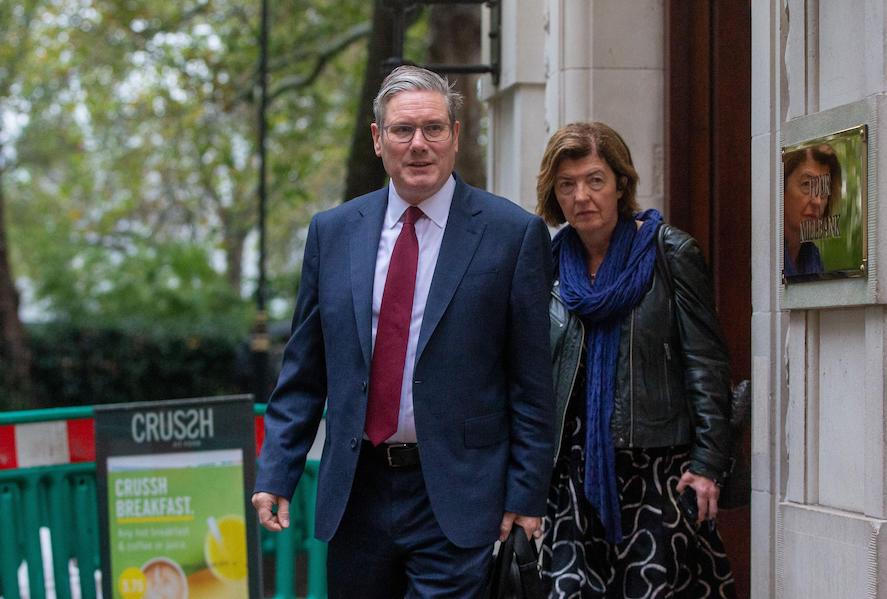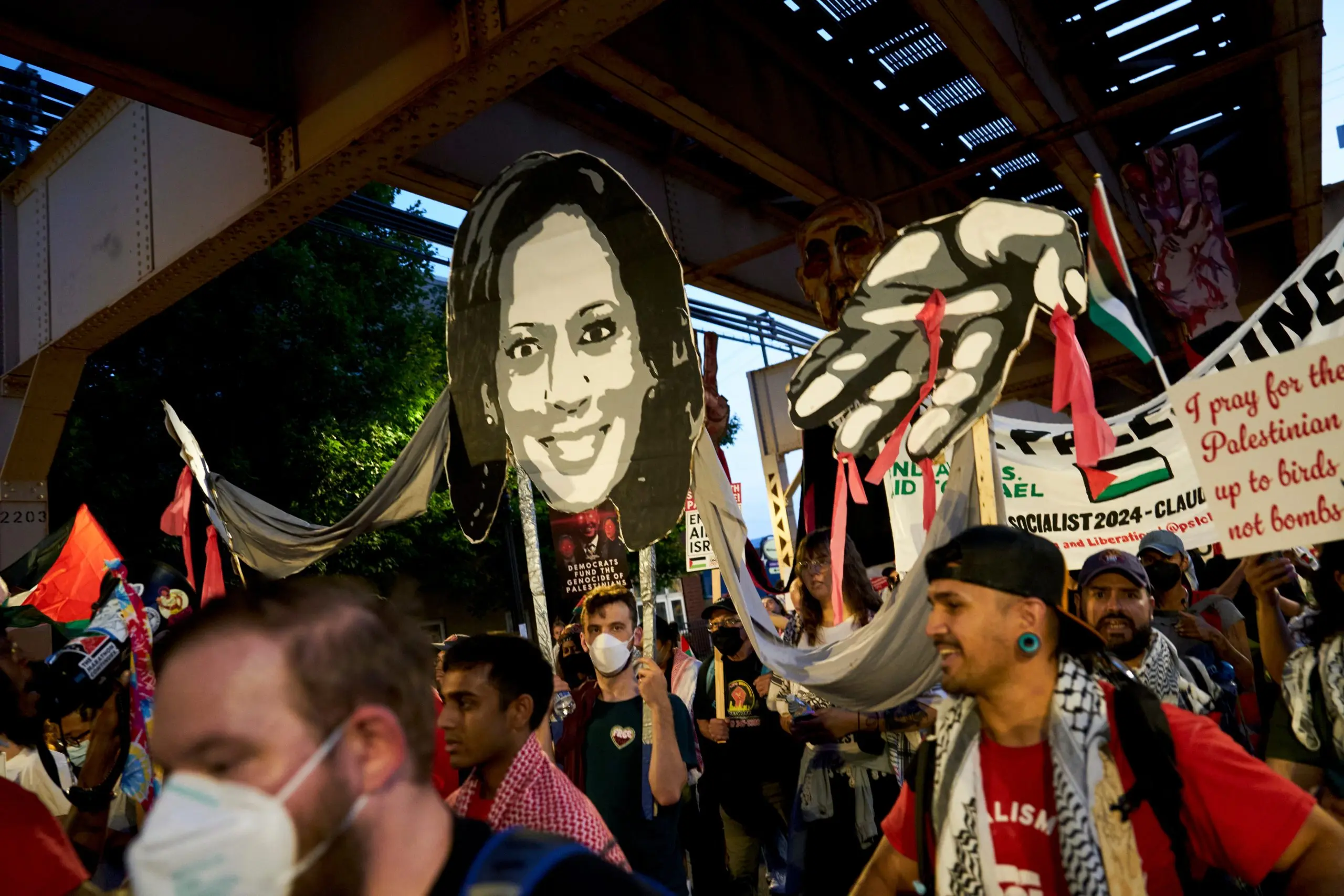When Labour leader Sir Keir Starmer touched down in snowy Davos this January, ready to schmooze business leaders in the Swiss Alps, he did not disembark alone. Instead, the Labour leader attended the annual celebration of international capital flanked by his shadow chancellor and trusty treasury sidekick, Rachel Reeves.
Reeves and Starmer’s Davos double-act was a further signal of the pair’s political affinity, with the two seemingly glued together as Labour hones its election pitch at the start of 2023. Indeed, the nearer British politics edges to an election expected in late 2024, the more inseparable Reeves and Starmer appear.
The ever-hardening duopoly is forged first and foremost by Starmer’s desire to rebrand Labour as economically credible and sound on finance — adapting to the political incentives provided by post-Trussonomics politics. It is probably little surprise that the former Bank of England economist has assumed a frontline position in Labour’s externally branded “Prawn Cocktail Offensive 2.0”.
But Labour’s new favourite double-act naturally begs the question of deputy leader Angela Rayner, formally Starmer’s number two. While Reeves has assumed front-and-centre positioning in Starmer’s recent policy announcements and business soirées, Rayner is largely reduced to interventions at the commons dispatch box, shadowing the work of Sunak confidant Oliver Dowden.
Firearms licensing is in crisis, BASC tells Parliamentary Committee inquiry

BASC’s scholarship programme open for 2023 applications
It is one of the cruel rules of opposition politics, with time in the spotlight so coveted, that the rise of one spokesperson almost always results in the equal and opposite decline in another. Something rather like this appears to be playing out between Reeves and Rayner.
Of course, Reeves’ irresistible rise to the top of the Labour Party hierarchy is at least in part creditable to the steady stream of fiscal events Britain has experienced in recent months. As shadow chancellor, a position she has held for less than two years, Reeves has jostled with four treasury chiefs over economic policy, taking them to task over budgets both “mini” and large.
Needless to say, Labour officials have been impressed. In the 2022 Spring Statement, Reeves poured scorn on then-chancellor Rishi Sunak’s economic proposals. She accused the then-chancellor of living in “Sunakland” where a belief in lower taxes actually translates into a hike in national insurance contributions. “Curiouser and curiouser”, the shadow chancellor continued.
But it is since the fallout from the mini-budget in September, that Reeves’ profile has seen the most significant boost. Sir Keir knows that his shadow chancellor’s stolidity in the face of the Conservative government’s frequent fiscal do-overs presents Labour with the perfect optics. Reeves’ continued presence, opposite four Conservative chancellors, creates a sense of political continuity and policy dependability in Labour ranks.
Crucially, the good optics are coupled with Reeves’ impressive CV, from which business leaders can only infer financial shrewdness. The shadow chancellor is a former economist who has worked variously at the Bank of England and the British embassy in Washington. It is hardly the background of someone businesses might fear.
Furthermore, like Starmer, Reeves presents as serious, on message and predictable. She is neither too miserable nor too gleeful about the state of country, and her speeches reveal an individual inclined to financial reform rather than big spending. Really it is little surprise that Reeves and Starmer have forged such a close political bond.
Then there is Angela Rayner, the party’s deputy leader and therefore Starmer’s nominal number two. Where Starmer sees Reeves as predictable and moderating, Rayner’s reputation is that of a direct politician whose effective communication can at times attract bad headlines. It is an approach that comes with potential problems for the risk-averse Starmer as we saw during the 2021 conference season, when Rayner labelled the Conservative party as “scum” at an event. It was embarrassing for Starmer, who pointedly affirmed that he would not have used such language.
Potential strains in the Rayner-Starmer relationship also burst forth in the 2021 shadow cabinet reshuffle, which saw the Labour leader make a botched attempt to demote his deputy, then party chair. Rayner’s association with the Corbynite ancien régime had been blamed by Starmer allies for the loss of the Hartlepool by-election to the Conservatives, but the resulting briefing war between the two offices ultimately saw Rayner’s position strengthened. Rather than a demotion, Rayner emerged with a significantly beefed-up role as shadow chancellor of the Duchy of Lancaster role as well as a newly created post as shadow secretary for the future of work. The episode underlined that Rayner still has a significant support base in the party which, coupled with her elected position as deputy leader, makes her essentially unsackable.
Of course, this is not the first time a Labour leader and deputy leader have not entirely seen eye-to-eye. The previous iteration of the Labour party leadership under Jeremy Corbyn and his deputy Tom Watson was believed to be deeply fractious. Both Watson and Corbyn had large support bases in the party, but they drew on very different political traditions and their appeal among MPs and the grassroots often conflicted. Splits emerged on several occasions, particularly on the matters of Brexit and the handling of anti-semitism. Watson later revealed that he had voted for the leadership challenger Owen Smith in 2016 despite his position as deputy leader.
But perceived political differences between a leader and deputy leader need not create such difficulty. One pertinent case study is that of Tony Blair and John Prescott, who together held the top two positions in the Labour Party from 1994-2007. On the surface, Prescott and Blair could not have been more different. One was an older union-firebrand and the other was a young party moderniser. But Blair refused to see Prescott as a liability, instead using his strengths and ties to “old Labour” traditions as root for New Labour within the party — giving Blair’s rebrand crucial credibility.
Naturally, the political contexts have changed significantly since the early 2000s with the relationship between overlapping Labour factions now far more complicated than that of “old” and “new” Labour. But, like Prescott, Rayner may begin to be viewed by Starmer as asset in her own right — with her explosive government-bashing skills exploited in the commons and other contributions contained within boundaries set by the leadership.
In the end, the new dynamics at the top of the Labour party probably have more to Reeves’ perceived strengths than Rayner’s perceived weaknesses. The shadow chancellor is central to what makes Starmerism tick — it is metropolitan, moderating, business-friendly and dependable — it sees economic credibility as central to a winning pitch. In Reeves’ political profile therefore, Starmer has stumbled upon a seriously adept sidekick.
It is her CV, the subtext of which is Starmerism distilled, that has foisted Reeves over Rayner into Labour’s de facto number two spot.





















Discussion about this post